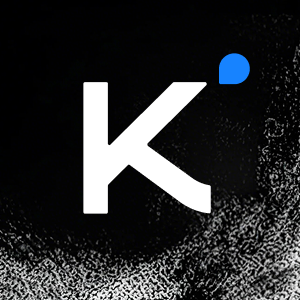AppIntro项目中使用自定义Drawable实现动态图标
2025-05-22 22:10:35作者:邓越浪Henry
在Android开发中,AppIntro是一个常用的引导页库,它提供了简单易用的API来创建精美的应用介绍页面。然而,默认情况下,AppIntroFragment仅支持通过资源ID设置图片,这限制了开发者使用动态生成的图标(如FontAwesome等矢量图标库)的能力。
默认实现的局限性
AppIntroFragment的createInstance()方法通常需要传入一个图片资源ID作为参数:
AppIntroFragment.createInstance(
"标题",
"描述",
R.drawable.your_image, // 必须传入资源ID
backgroundColor,
titleColor,
descriptionColor
);
这种设计存在两个主要限制:
- 无法直接使用运行时生成的Drawable对象
- 无法动态更改图标(如根据用户主题变化)
解决方案:使用AppIntroCustomLayoutFragment
AppIntro库提供了AppIntroCustomLayoutFragment类,专门用于完全自定义引导页的布局和内容。通过这个类,开发者可以:
- 创建任意自定义布局
- 在运行时动态设置任何类型的Drawable
- 完全控制UI元素的行为和样式
实现步骤
- 创建自定义布局XML文件
首先创建一个包含ImageView的布局文件(如custom_intro_layout.xml):
<LinearLayout xmlns:android="http://schemas.android.com/apk/res/android"
android:layout_width="match_parent"
android:layout_height="match_parent"
android:orientation="vertical"
android:gravity="center">
<ImageView
android:id="@+id/customIcon"
android:layout_width="wrap_content"
android:layout_height="wrap_content"/>
<TextView
android:id="@+id/title"
android:layout_width="wrap_content"
android:layout_height="wrap_content"/>
<TextView
android:id="@+id/description"
android:layout_width="wrap_content"
android:layout_height="wrap_content"/>
</LinearLayout>
- 创建自定义Fragment
继承AppIntroCustomLayoutFragment并实现自定义逻辑:
public class CustomIntroFragment extends AppIntroCustomLayoutFragment {
private ImageView customIcon;
@Override
public int getLayoutResId() {
return R.layout.custom_intro_layout;
}
@Override
public void onViewCreated(View view, @Nullable Bundle savedInstanceState) {
super.onViewCreated(view, savedInstanceState);
customIcon = view.findViewById(R.id.customIcon);
// 使用FontAwesome等动态图标
IconDrawable fontAwesomeIcon = new IconDrawable(getActivity(), Icons.gear, Color.GREEN);
customIcon.setImageDrawable(fontAwesomeIcon);
// 设置其他UI元素
TextView title = view.findViewById(R.id.title);
title.setText("自定义标题");
title.setTextColor(Color.WHITE);
}
}
- 添加到引导页
在Activity中使用自定义Fragment:
addSlide(new CustomIntroFragment());
高级用法
动态主题支持
通过自定义Fragment,可以轻松实现根据用户主题动态更改图标颜色:
// 在onViewCreated中
int iconColor = isDarkTheme ? Color.WHITE : Color.BLACK;
IconDrawable dynamicIcon = new IconDrawable(getActivity(), Icons.gear, iconColor);
customIcon.setImageDrawable(dynamicIcon);
动画效果
可以给自定义图标添加动画:
ObjectAnimator rotation = ObjectAnimator.ofFloat(customIcon, "rotation", 0f, 360f);
rotation.setDuration(1000);
rotation.start();
性能考虑
虽然自定义Fragment提供了极大的灵活性,但也需要注意:
- 避免在onViewCreated中执行耗时操作
- 复杂的动画可能会影响滑动流畅度
- 考虑使用缓存机制优化Drawable创建
总结
AppIntro库通过AppIntroCustomLayoutFragment为开发者提供了完全的UI控制能力,完美解决了动态图标的需求。相比修改库源代码或使用变通方法,这是官方推荐且更稳定的解决方案。开发者可以根据项目需求,自由组合系统图标、矢量图标甚至动画效果,创建出独特的应用引导体验。
登录后查看全文
热门项目推荐
相关项目推荐
 AutoGLM-Phone-9BAutoGLM-Phone-9B是基于AutoGLM构建的移动智能助手框架,依托多模态感知理解手机屏幕并执行自动化操作。Jinja00
AutoGLM-Phone-9BAutoGLM-Phone-9B是基于AutoGLM构建的移动智能助手框架,依托多模态感知理解手机屏幕并执行自动化操作。Jinja00 Kimi-K2-ThinkingKimi K2 Thinking 是最新、性能最强的开源思维模型。从 Kimi K2 开始,我们将其打造为能够逐步推理并动态调用工具的思维智能体。通过显著提升多步推理深度,并在 200–300 次连续调用中保持稳定的工具使用能力,它在 Humanity's Last Exam (HLE)、BrowseComp 等基准测试中树立了新的技术标杆。同时,K2 Thinking 是原生 INT4 量化模型,具备 256k 上下文窗口,实现了推理延迟和 GPU 内存占用的无损降低。Python00
Kimi-K2-ThinkingKimi K2 Thinking 是最新、性能最强的开源思维模型。从 Kimi K2 开始,我们将其打造为能够逐步推理并动态调用工具的思维智能体。通过显著提升多步推理深度,并在 200–300 次连续调用中保持稳定的工具使用能力,它在 Humanity's Last Exam (HLE)、BrowseComp 等基准测试中树立了新的技术标杆。同时,K2 Thinking 是原生 INT4 量化模型,具备 256k 上下文窗口,实现了推理延迟和 GPU 内存占用的无损降低。Python00 GLM-4.6V-FP8GLM-4.6V-FP8是GLM-V系列开源模型,支持128K上下文窗口,融合原生多模态函数调用能力,实现从视觉感知到执行的闭环。具备文档理解、图文生成、前端重构等功能,适用于云集群与本地部署,在同类参数规模中视觉理解性能领先。Jinja00
GLM-4.6V-FP8GLM-4.6V-FP8是GLM-V系列开源模型,支持128K上下文窗口,融合原生多模态函数调用能力,实现从视觉感知到执行的闭环。具备文档理解、图文生成、前端重构等功能,适用于云集群与本地部署,在同类参数规模中视觉理解性能领先。Jinja00 HunyuanOCRHunyuanOCR 是基于混元原生多模态架构打造的领先端到端 OCR 专家级视觉语言模型。它采用仅 10 亿参数的轻量化设计,在业界多项基准测试中取得了当前最佳性能。该模型不仅精通复杂多语言文档解析,还在文本检测与识别、开放域信息抽取、视频字幕提取及图片翻译等实际应用场景中表现卓越。00
HunyuanOCRHunyuanOCR 是基于混元原生多模态架构打造的领先端到端 OCR 专家级视觉语言模型。它采用仅 10 亿参数的轻量化设计,在业界多项基准测试中取得了当前最佳性能。该模型不仅精通复杂多语言文档解析,还在文本检测与识别、开放域信息抽取、视频字幕提取及图片翻译等实际应用场景中表现卓越。00 GLM-ASR-Nano-2512GLM-ASR-Nano-2512 是一款稳健的开源语音识别模型,参数规模为 15 亿。该模型专为应对真实场景的复杂性而设计,在保持紧凑体量的同时,多项基准测试表现优于 OpenAI Whisper V3。Python00
GLM-ASR-Nano-2512GLM-ASR-Nano-2512 是一款稳健的开源语音识别模型,参数规模为 15 亿。该模型专为应对真实场景的复杂性而设计,在保持紧凑体量的同时,多项基准测试表现优于 OpenAI Whisper V3。Python00 GLM-TTSGLM-TTS 是一款基于大语言模型的高质量文本转语音(TTS)合成系统,支持零样本语音克隆和流式推理。该系统采用两阶段架构,结合了用于语音 token 生成的大语言模型(LLM)和用于波形合成的流匹配(Flow Matching)模型。 通过引入多奖励强化学习框架,GLM-TTS 显著提升了合成语音的表现力,相比传统 TTS 系统实现了更自然的情感控制。Python00
GLM-TTSGLM-TTS 是一款基于大语言模型的高质量文本转语音(TTS)合成系统,支持零样本语音克隆和流式推理。该系统采用两阶段架构,结合了用于语音 token 生成的大语言模型(LLM)和用于波形合成的流匹配(Flow Matching)模型。 通过引入多奖励强化学习框架,GLM-TTS 显著提升了合成语音的表现力,相比传统 TTS 系统实现了更自然的情感控制。Python00 Spark-Formalizer-X1-7BSpark-Formalizer 是由科大讯飞团队开发的专用大型语言模型,专注于数学自动形式化任务。该模型擅长将自然语言数学问题转化为精确的 Lean4 形式化语句,在形式化语句生成方面达到了业界领先水平。Python00
Spark-Formalizer-X1-7BSpark-Formalizer 是由科大讯飞团队开发的专用大型语言模型,专注于数学自动形式化任务。该模型擅长将自然语言数学问题转化为精确的 Lean4 形式化语句,在形式化语句生成方面达到了业界领先水平。Python00
项目优选
收起
deepin linux kernel
C
24
9
OpenHarmony documentation | OpenHarmony开发者文档
Dockerfile
413
3.18 K
Nop Platform 2.0是基于可逆计算理论实现的采用面向语言编程范式的新一代低代码开发平台,包含基于全新原理从零开始研发的GraphQL引擎、ORM引擎、工作流引擎、报表引擎、规则引擎、批处理引引擎等完整设计。nop-entropy是它的后端部分,采用java语言实现,可选择集成Spring框架或者Quarkus框架。中小企业可以免费商用
Java
9
1
Ascend Extension for PyTorch
Python
228
258
暂无简介
Dart
679
160
本项目是CANN提供的数学类基础计算算子库,实现网络在NPU上加速计算。
C++
689
325
🔥LeetCode solutions in any programming language | 多种编程语言实现 LeetCode、《剑指 Offer(第 2 版)》、《程序员面试金典(第 6 版)》题解
Java
65
19
React Native鸿蒙化仓库
JavaScript
265
326
🎉 (RuoYi)官方仓库 基于SpringBoot,Spring Security,JWT,Vue3 & Vite、Element Plus 的前后端分离权限管理系统
Vue
1.21 K
660
旨在打造算法先进、性能卓越、高效敏捷、安全可靠的密码套件,通过轻量级、可剪裁的软件技术架构满足各行业不同场景的多样化要求,让密码技术应用更简单,同时探索后量子等先进算法创新实践,构建密码前沿技术底座!
C
1.03 K
492